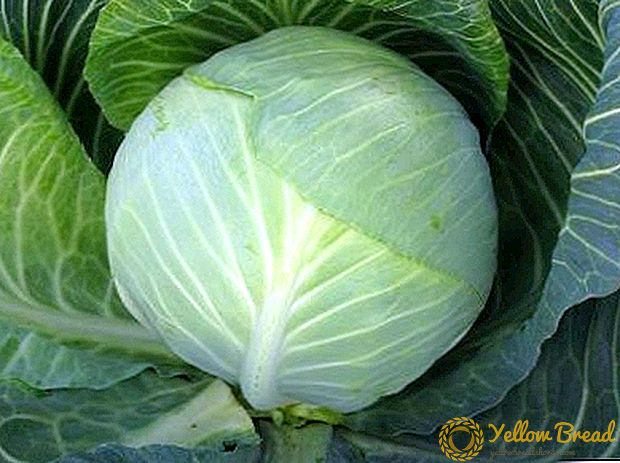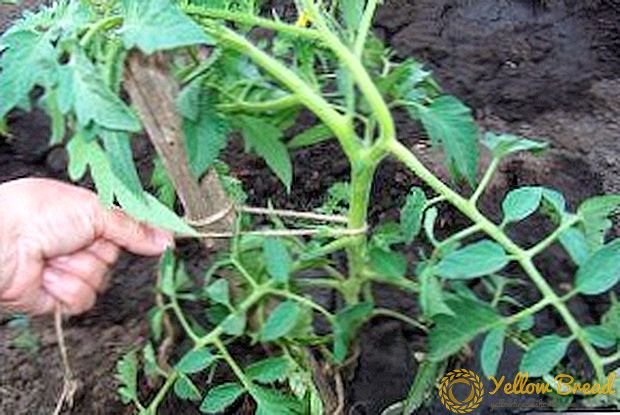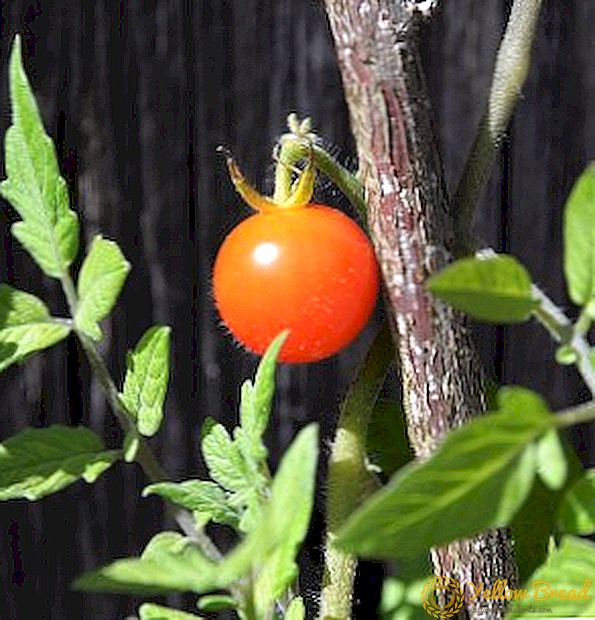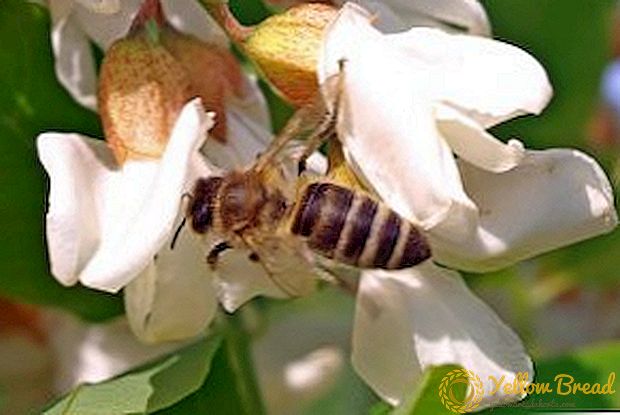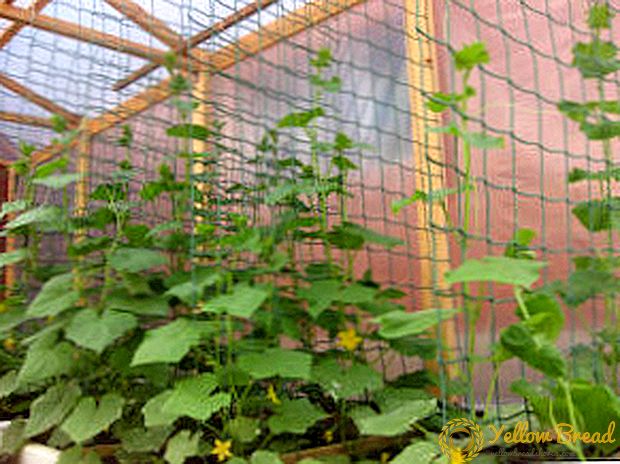
The first immigrants, having arrived to develop Siberia, unsuccessfully tried to grow a pear there. Their mistake was that the European varieties that the newly-grown gardeners were trying to grow in difficult weather conditions could not tolerate the cold winters of those places.
But pears can be grown under the conditions of severe Siberian weather. To do this, you only need to select the appropriate varieties that can survive in Siberia.
The most suitable are: "Severyanka", "Autumn Yakovlev", "Favorite", "Memory of Yakovlev", "Autumn Dream", "Svetlyanka", "Taiga", "Lukashevka", "Myth". Further we will consider in more detail some varieties.
- Variety pears "Northerner"
- Pear "Autumn Yakovlev"
- Description of the variety "Autumn Dream"
- About variety "Svetlyanka"
- Sor litter "Myth"
- A little about the grade "Uralochka"
- Description variety "Dekabrinka"
- Variety of pears "Fairy"
- Pear varieties "Svarog"
- Features of growing and caring for pears in Siberia
Variety pears "Northerner"

The tree, as a rule, grows not big. The crown is mostly not thick, wide, pyramidal shape. The bark is smooth, gray in color. Runs pears of this variety are not very thick, light green color. The leaves have a slightly curved shape with pointed ends and wide round bases. Flowers Severyanka white, inflorescences are located on 4-6 pieces.
Fruit, pear Northerner, brings smallThe shape has a truncated conical. When ripe, the fruit becomes greenish-yellow in color, gradually turning yellow and acquiring a dull blush. Northerner has a sweet-sour taste, juicy pulp of medium density. The fruits ripen by early August.
The advantages of this variety include the small dimensions of the trees, high yield, winter hardiness, a variety of fruits, scab immunity.
In addition, this variety has drawbacks: increased fall-off of the crop, a large variety of fruit sizes, which results in the appearance of too small pears and a decrease in taste. Drawing attention to the disadvantages, Severyanka is less actively used by gardeners, but is good for breeding new varieties.
Pear "Autumn Yakovlev"

Trees varieties Autumn Yakovleva grow rapidly and grow tall. The high round crown hangs a little at the tips of the branches, the skeletal branches are firmly spliced. Shoots are usually curved and have a small amount of lentils. The leaves grow upward, have a wedge-shaped shape and a serrate edge.
Pears appear on fruit ponds and kolchatka.The fruits grow a broad pear-shaped form of yellow-green color, with a reddish side. Weight of pears on average - 250 grams. The fruit is tender, rather juicy and sweet. The crop ripens in late summer - early autumn. The average yield from one tree is 30-35 kg of pears. In cold conditions, the fruit can be preserved until January.
Planted this variety in loamy, light soils. It is better to disembark in spring, or a month before frosts in autumn, adding peat, compost. Seedlings should be watered regularly, and in the first year you can not fertilize. An adult tree does not require constant watering, as it does not tolerate excessive moisture. Pear gives good results on nutrient, drained soils.
Among the advantages of this variety - a good transfer of drought, frost and a wonderful taste of the fruit. The disadvantage is the low resistance to scab and large dimensions of trees.
Description of the variety "Autumn Dream"

Trees grow small, have a pyramidal, sparse crown. The shoots are medium thick, slightly curved, yellowish in color. Rounded, oblong, light green leaves, the plate is slightly curved with a serrate edge.
Fruits grow small, not too homogeneous, have a rounded shape. The main color of the ripe fruit is greenish-yellow, which is subsequently enhanced and acquires the appearance of a light tan. Fruits are light, juicy, medium in density, have a sweet and sour, refreshing taste. Ripen closer to the end of August. If you comply with the storage conditions (0-1C), the fruit can be stored for up to six months.
Gardeners point out such virtues of this variety: small trees, scab immunity, fruits prone to long storage. The disadvantages are not so serious - they have an unattractive appearance.
About variety "Svetlyanka"

Mature trees are medium in size, have a sprawling, not too thick crown pyramidal shape. Straight shoots grow of medium thickness, light brown in color, with a large number of lentils. Svetlyanka leaves are medium in size, oval in shape, slightly pointed with a serrate edge.
Fruits grow medium size, about 90-120 grams. Pears have a regular, rounded shape, the skin is smooth. The main color of the ripe fruit is greenish-yellow.The fruits have a deep funnel and a middle, obliquely stem. The flesh of these pears is creamy, tender and juicy. The harvest is ripening around the beginning of September and can be stored for about 90 days.
Indisputable advantage is a good winter hardiness and high immunity of disease, as well as a pleasant taste of pears. The disadvantage is the shallowing of the fruits due to the thickening of the crown and, in some cases, the rotting of individual fruits during prolonged storage.
Sor litter "Myth"

Trees Myth varieties can grow both medium and high. Grow fast and have a crown of medium thickness and a narrow pyramidal shape. The branches are compact. The shoots are medium in size, brown in color.
The leaves, as a rule, are medium, slightly oblong and slightly rounded in shape, their color is green, they do not have pubescence, but on the contrary shine. The sheet has a serrate edge and is slightly curved towards the bottom. Flowers with oval petals grow medium in size.
Fruits Myth small size. Their skin has roughness, dull, greenish-yellow color. The stem of this pear is usually long and slightly curved, the funnel of the fruit is small, sharply conical. The flesh of the fruit is quite juicy, cream-colored.The crop ripens by the end of September and can be stored from 30 to 90 days.
The strength of the variety experts call winter hardiness and, of course, good taste and resistance to scab.
A little about the grade "Uralochka"

Trees varieties Uralochka can reach up to five meters in height. The branches grow straight, the crown is not thick. The bark, in most cases, gray. The shoots are medium, slightly articulated and rounded. The leaves have an elliptical shape in green, shiny and smooth.
Fruit very small - about 45 grams. The skin is rough and slightly dull. When ripe, the fruits become golden yellow in color. The stem is medium in size, slightly curved and starts in a small funnel. The flesh is sweet and sour and juicy enough. Variety Myth is late autumn and ripens by September 15-25. Shelf life is not very long - up to 30 days.
The advantages of varieties gardeners consider: high winter hardiness, resistance to scab, a high degree of resistance of flowers to night frosts. Reproduction occurs by budding and grafting Ussuri pear. Pruning is carried out mainly for young trees, and it is done with a formative purpose.Subsequent pruning carried out on adult trees for rejuvenation.
Description variety "Dekabrinka"

The size of the trees Decakrinka can reach five meters. The branches grow crooked, creating a rounded, dense crown. Shoots, medium in sizegrow straight. The leaves are oblong, but small, dark green and shiny. The leaf plate bends upwards.
Fruits Dekabrinka average, can reach 90-120 grams. Pears are right in shape, have a smooth surface. By the time of ripening, the fruit becomes dark yellow, with a pale blush. A long stalk emerges from a small, slightly rusted funnel.
Fruits are juicy, with sweet-sour pulp of white color, have light aroma. Fruits ripen by the end of the second decade of the first autumn month. Shelf life can vary from one to three months.
Variety Decabrinka tolerates winterresistant to scab, immune to pear mites, yields stable and fairly high. Pleasant to the taste of the fruit - the undeniable advantages of the variety Decarinka.
Variety of pears "Fairy"

"Fabulous" trees grow tall enough. Straight branches form a dense crown of a narrow pyramidal shape.The shoots grow medium in length, dark red in color with small round buds bent off.
Small leaves grow oblong, short-pointed, dark green in color, with a smooth, hairless surface. Mature fruits can reach a mass of 180-250 g, most of the same, the correct form.
With a ripening pear, the Fairytale variety becomes yellow-green. Fruits with medium dense pulp of white color, tender and rather juicy. The sweet taste of pears has a faint spicy aroma.
Crop ripening occurs at the end of summer. Shelf life does not exceed ten days. Therefore, the Fairytale variety, in most cases, is used to make compote or juice.
Tall Fairy tale is considered a disadvantage, but this pear has much more advantages: of course, it is good winter hardiness, immunity of scab and pear mite, as well as large tasty fruits.
Pear varieties "Svarog"

Svarog trees are medium in size and have a dense round crown. Shoots bow downward. The small leaves of an elliptical shape twist to apex.Leaf color is light green, slightly wrinkled and hairy.
The fruits are small in size, broad pear-shaped, average weight is about 80 grams. Reaching maturity, the fruits turn yellow and have a light blush. Delicate cream-colored flesh has a pleasant, juicy, sweet-sour taste. You can collect the fruit in late September - early October. At cool temperatures, pears can be stored for up to 90 days.
Variety tolerates winter and is resistant to fungi, but susceptible to drought.
Features of growing and caring for pears in Siberia

Having considered several types of varieties that can grow in the conditions of severe Siberian weather, we see that the cultivation of pears in Siberia is still possible. Finally, summing up, we will give some tips that will help improve the conditions for growing pears in the Siberian climate.
Pear is a heat-loving plant, so it is best to grow it in well-protected places. The chosen place should be sufficiently light, because in the shade of the pear the small branches of the crown will die off and the harvest will decrease.
Before planting pears, it is necessary to prepare the soil. The introduction of mineral and organic fertilizers is required. It is best to plant seedlings during the period of the end of April - beginning of May.
The pit for planting should be 80-100cm wide and 60-80cm deep. The root neck of a tree should go 4-5 cm underground. While planting the seedling in the ground, you should add about 8 kilograms of organic fertilizer.
Young plants require pruning for the formation and subsequent development of the crown. In the spring, pears require thinning of the crown to remove excess shoots. In order to protect against rodents and sunburn, the trunk and skeletal branches are wrapped with improvised material. Also, to protect the table from insects, lime mortar is applied on it.
In winter, additional hilling is necessary not only with earth, but also with snow, in order to retain heat.
If you follow all these simple rules for the care of a pear tree, it will definitely thank you for a good harvest.

